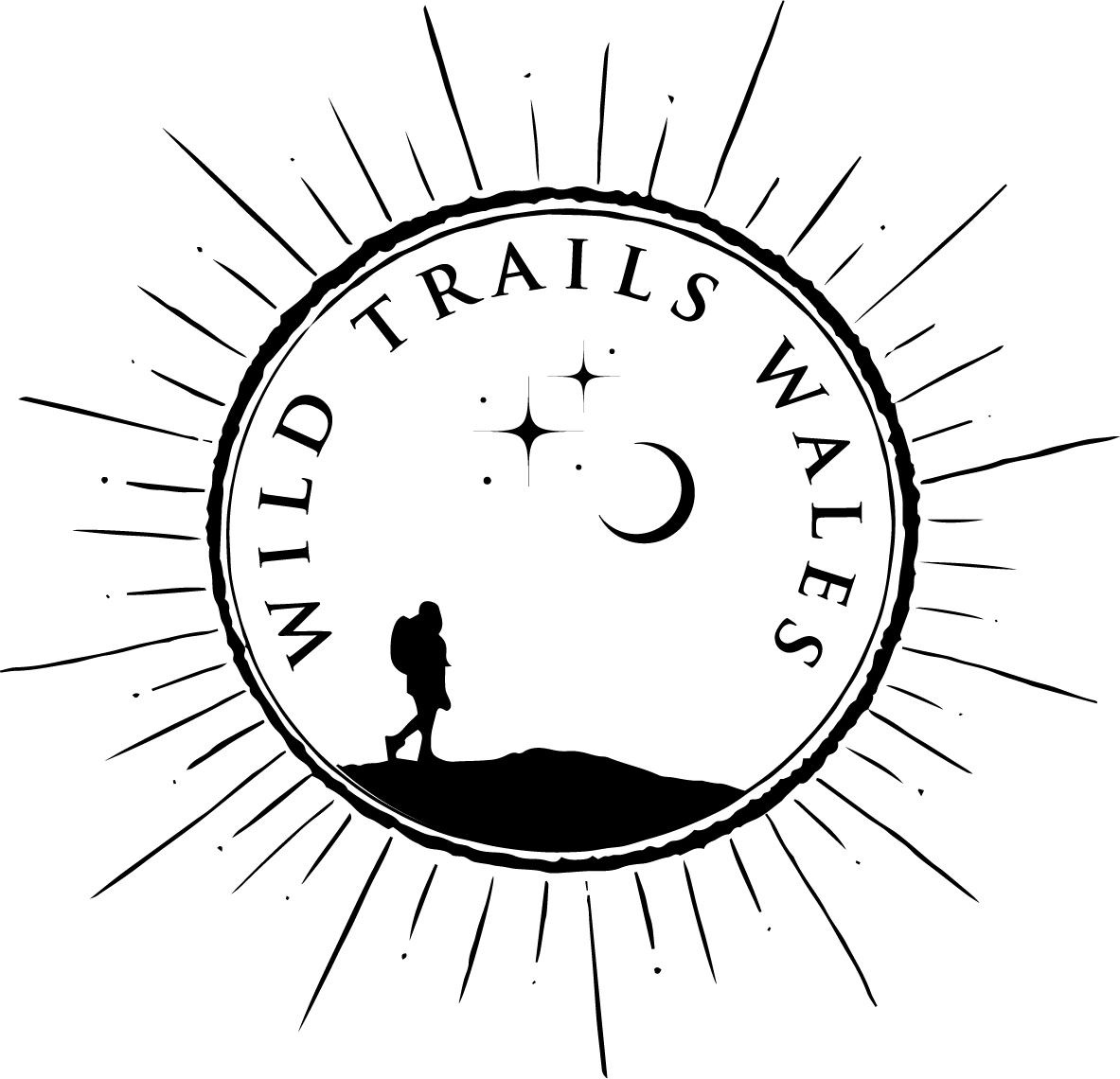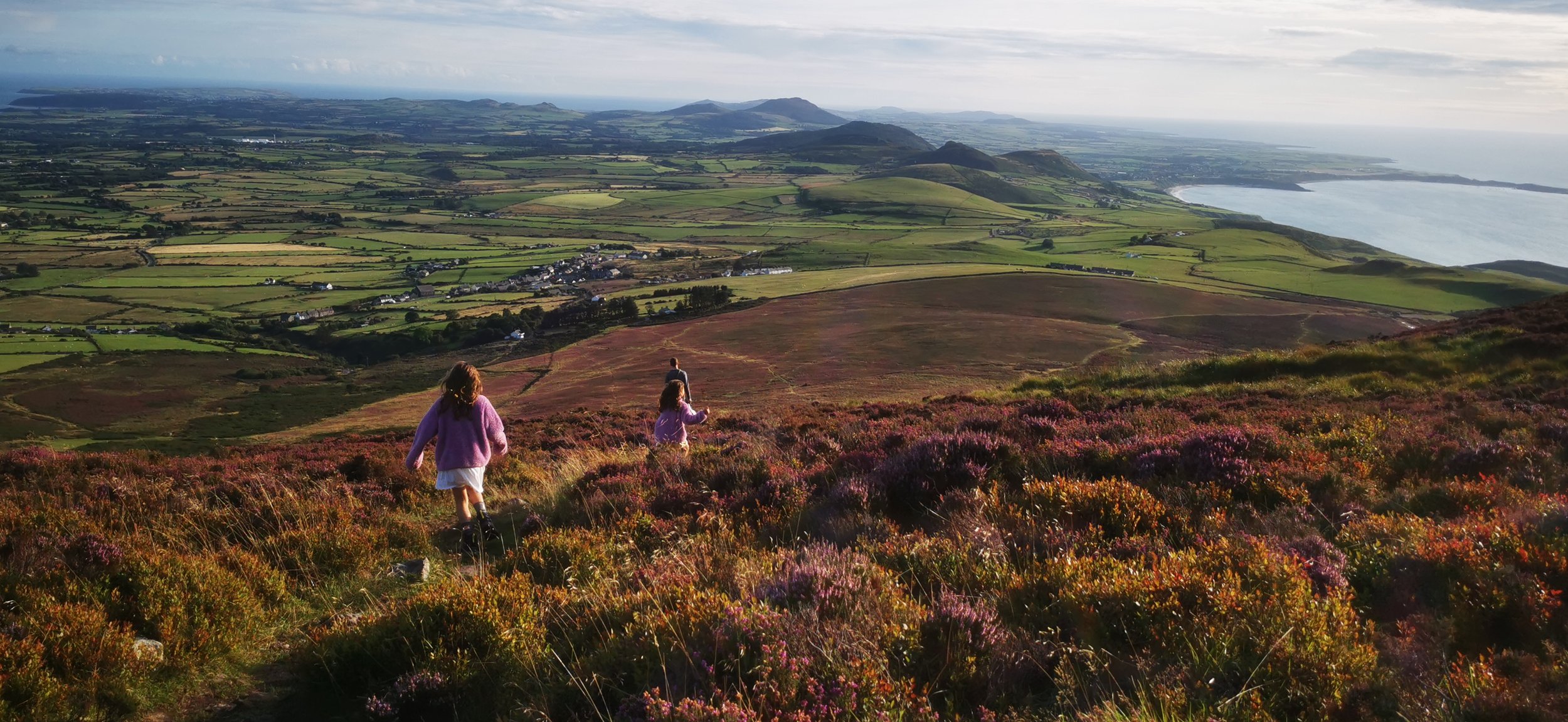Wild Trails Wales Guide: Hiking with Children
On Y Gwilwyr (Cantilever Stone), Glyder Fach
Hiking with children can be so much fun. Experiencing things through their eyes really makes you appreciate the little details and be more in the moment. It can also be a nightmare with tantrums, tears and enough complaining to make you wish you hadn’t bothered. I have walked this line for the past almost ten years with my children, and while I still have to adapt our adventures to their phases, we’ve learnt a lot about what can help make a successful and more importantly, enjoyable adventure (or not!).
About to start the long walk down from the summit - headtorches at the ready!
Prepare yourself
Ideally, on a walk with children, you’ll feel so comfortable yourself that you’ll be able to give them full attention. That means being fit enough for the route you’re taking on, and strong enough to carry extra kit, snacks, and even small people if they get too tired. You’ll be warm, dry and won’t need to faff too much with your kit. You’ll feel confident with finding your way on the route and having the skills to re-route or cut the walk short if necessary. You may also want to consider having some outdoor first aid training if you’re planning to go to remote areas.
Local walks can be great for getting children enthused about exploring
Start small
To young children, the smallest hill will feel like a mountain, and a mile-long walk along the coast will feel like a full day trek. Start with shorter distances and see how they respond before tackling longer hikes. Your child might physically be able to make it all the way up Pen y Fan or Yr Wyddfa by the age of five, but will they actually enjoy it? If you push them too soon it may end up a suffer fest for all involved.
Children will find dens anywhere!
Get them involved
When you’re planning, get the children involved. Show them photos of what the walk will look like, let them look at the map with you. Give them an option between three different walks, or ask them which day they’d like to go. Ask them to write a packing list. It helps them to feel like they have some control rather than being dragged along. On the walk, ask them to help you find landmarks, trig points, shelters etc.
Snacks
Speaking of packing lists, there is nothing my children enjoy more than planning which snacks they are going to have on a hike. There are always sweets, but I also try to include something with more sustenance which keeps them going for longer. Children need to eat more regularly than adults especially when doing something very active, so pack way more food than you may usually need.
Who says a bright yellow satin ballgown and hiking boots isn’t appropriate for walking in the Brecon Beacons?
Clothes & kit
My children have always been very strong-minded when it comes to what they want to wear. I’ve been known to spend lots of money on proper hiking gear for them, and then they refuse to leave the house unless they can wear their sequinned skirt and fluffy cardigan. Because arguing about clothes is futile for us, I let them wear what they want. Beauty & the Beast Belle dress phase included. Then, when they inevitably get cold or can’t climb in the way they want to, out come the ‘proper’ hiking clothes which I’ve packed for them anyway. Over time they’ve learnt to dress more suitably to start with.
Hiking boots seem so clunky on little feet and legs but the grip is usually necessary for us as we spend a lot of time in wet, muddy areas and around slippery rocks. The higher ankle also stops complaints about wet feet. But pack spare socks - lots of them.
Power nap before the final summit push on Glyder Fach
Be prepared to go sloooow
When planning your day, allow much more time than you would if you were doing it alone. For example, when we climbed Yr Wyddfa (Snowdon) when the children were seven, we took eight hours compared to around five when we are solo. We’ll always pack headtorches and tonnes of extra food and layers as we know we may be out for a long day. There's a fine balance between letting them have lots of breaks and poke around at things, and then encouraging them to speed up a little so you can actually get home for dinner!
Handstands on Yr Eifl
Let them have fun
Spotting plants, climbing up rocks, splashing in water, foraging, making up games and stories is all part of an enjoyable hike with children. Yes that rock really does look like a crocodile! Having a purpose to the walk is often a great motivator for children. We will usually choose routes which have a ‘secret’ waterfall, lake, interesting rock, trig point, bothy, etc. You never know, you might end up having more fun too.
Looking very at home on Tryfan
Managing risk
Risk looks different for each family and so really knowing how your child may respond around risks is important. I feel comfortable with a level of risk that some people really wouldn’t, because I know the physical capabilities of my children and also how likely they are to listen to me if I need to tell them to stop or come away from edges etc.
Taking in the view on Fan Brycheiniog
It’s ok to turn back
If your child is really miserable, or if you don’t think that they’re going to be able to manage the intended route, it is always better to turn around and cut the day short before you put them off for life. It’s easy for parental ego to creep in, making you really want to get your child to the top of whichever mountain or to that waterfall, but try to recognise that for what it is and put them first. Try another day or find another activity that they’re happy with. They don’t have to enjoy the same things as you! Praise their effort rather than the outcome. Help them appreciate their achievements by printing out photos from a walk, creating a scrapbook, or buying them a patch for the walk they went on.
Leaving me in their dust on the downhills
Try to keep up!
On the other hand, at some point, your children may completely overtake you and become stronger, fitter, faster hikers. Try to keep up!
Do you have any top tips for hiking with children? Any success stories? Or failures? Please share in the comments below.
Please note that this guide is for inspiration purposes only. Please Be Adventure Smart.











